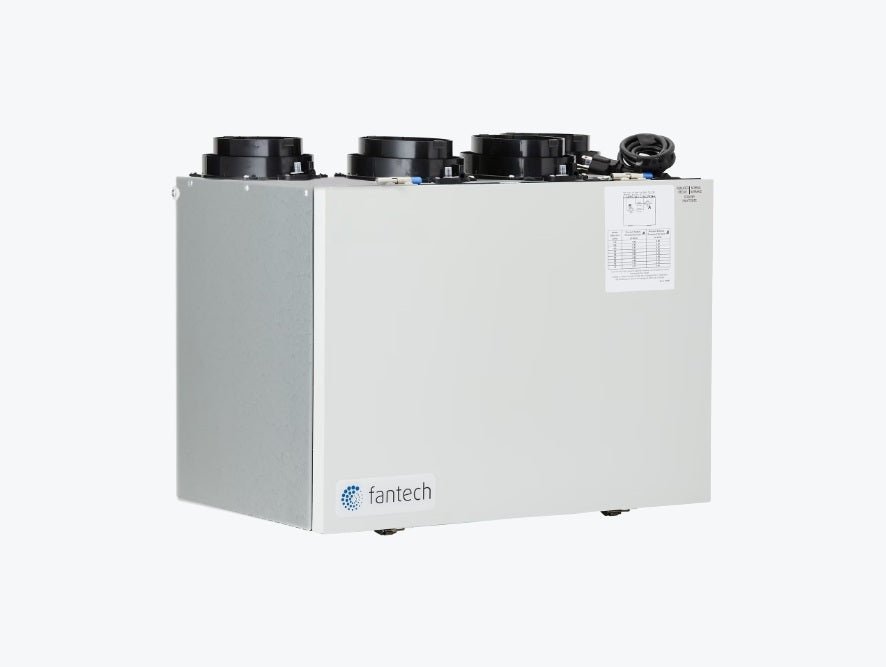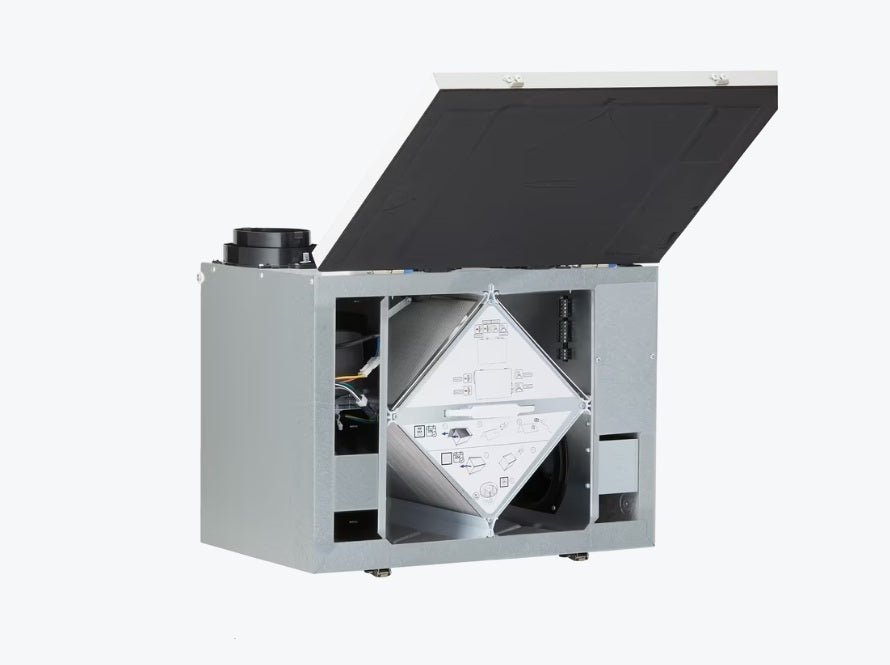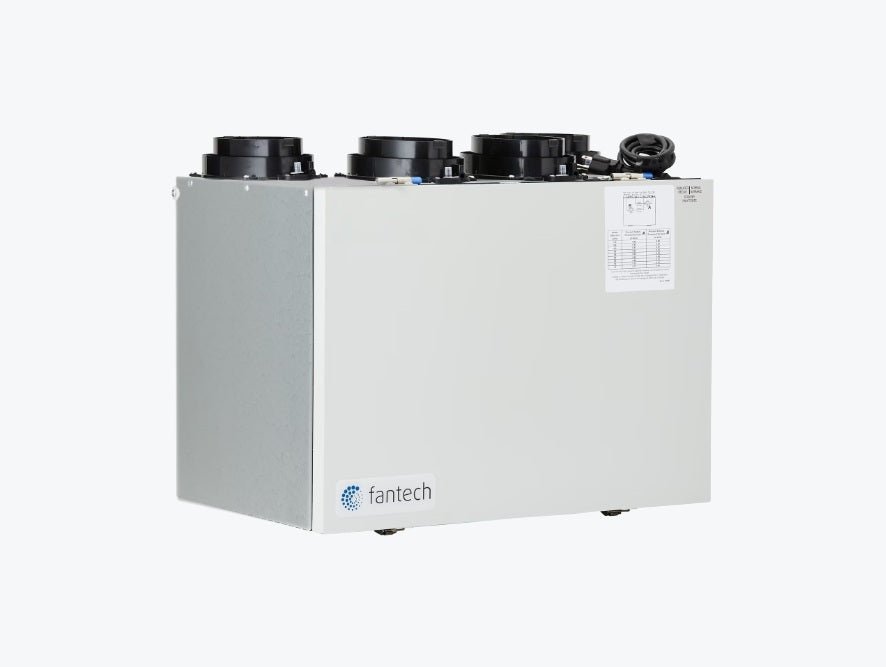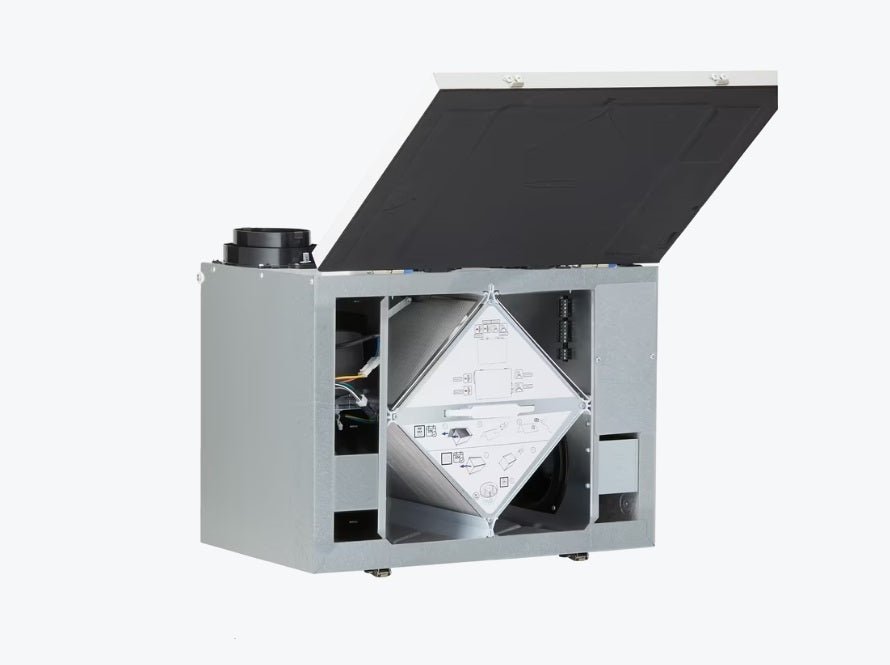1
/
of
2
Fantech
Fantech VHR Compact Model FLEX 100H ES (HRV)
Fantech VHR Compact Model FLEX 100H ES (HRV)
Regular price
$988.00 CAD
Regular price
Sale price
$988.00 CAD
Unit price
/
per
Shipping calculated at checkout.
Fantech VHR Compact Model FLEX 100H ES (HRV)
Top duct connection HRV, 104 cfm + Turbo mode
Item #: 463333
As Fantech’s masterpiece of versatility, features and efficiency, the FLEX 100H is ideal for high-rise apartment applications, condominiums, single and multi family homes. With its compact top port design featuring 5 in. (125 mm) oval collars and the included EZ-Mount wall bracket, the FLEX 100H can be installed in spaces as small as 24 in. (610 mm), such as a closet or maintenance room.
Unlike traditional HRVs that require excessive power to meet supplemental ventilation needs, the compact, yet powerful FLEX 100H allows for sizing based entirely on principal ventilation requirements. With its exclusive TurboTouch feature, the FLEX 100H can deliver
increased exhaust capacity to easily meet supplemental ventilation needs
whenever additional airflow is required.
increased exhaust capacity to easily meet supplemental ventilation needs
whenever additional airflow is required.
Features
-
Average airflow – 106 CFM (50 L/s) @ 0.4 in. w.g. (100Pa)
-
TurboTouch function boosts exhaust capacity
- 5 in. (125 mm) oval duct connections with integrated airflow measurement
- Removable screw terminal for easy connection
- Super compact size
- Top port design fits in tight spaces
- Includes EZ-Mount wall bracket
- Aluminum heat recovery core
- Multiple speed operation
- Internal recirculation defrost
- Suggested Replacement: fantech HERO 120H (99400)
- Turbo Mode is an intermittent mode only. It can be activated with the RTS2, RTS5 and the ECO-Touch for up to 60 minutes.
Downloads:
Couldn't load pickup availability




